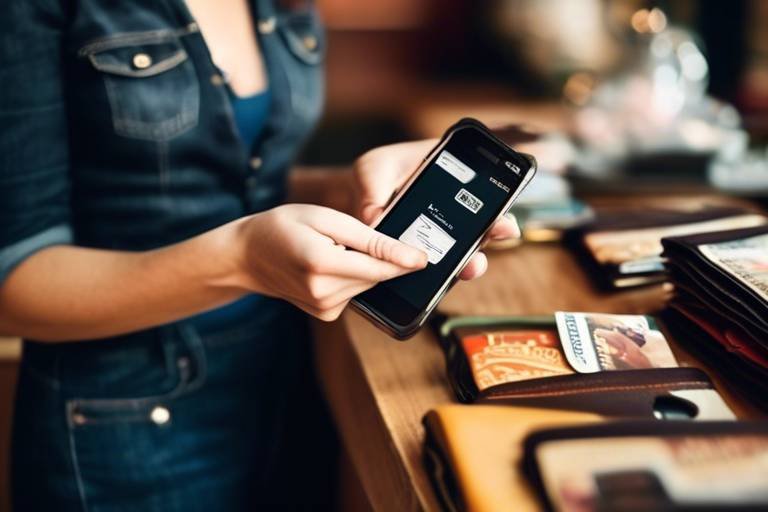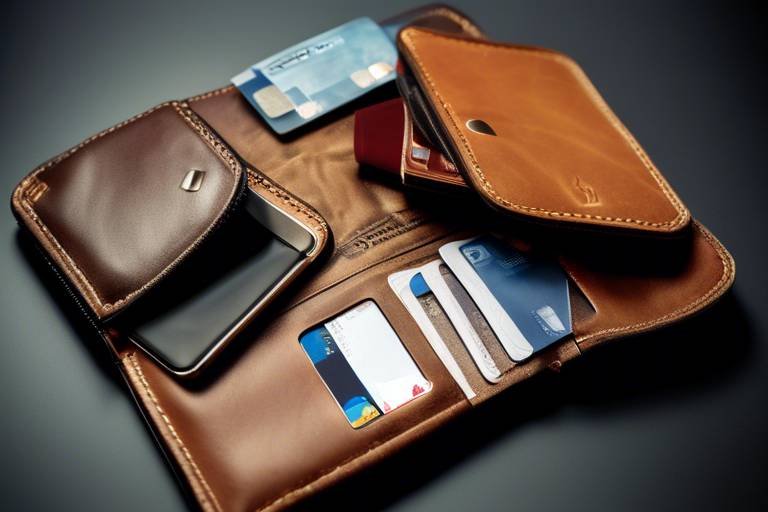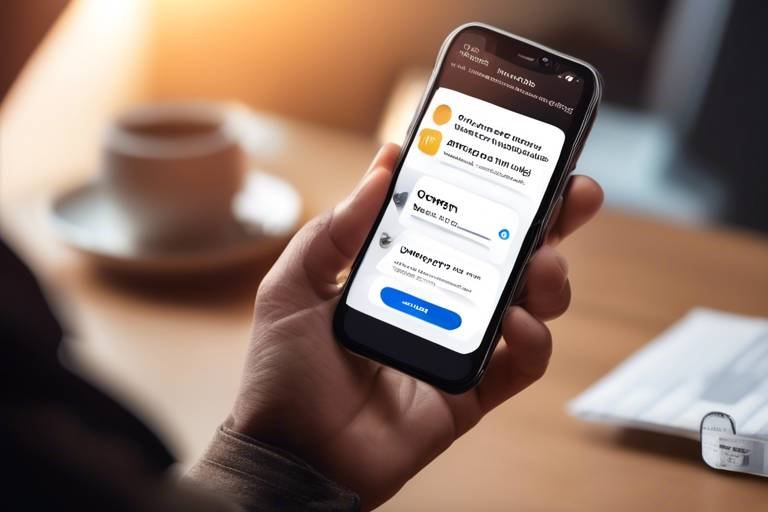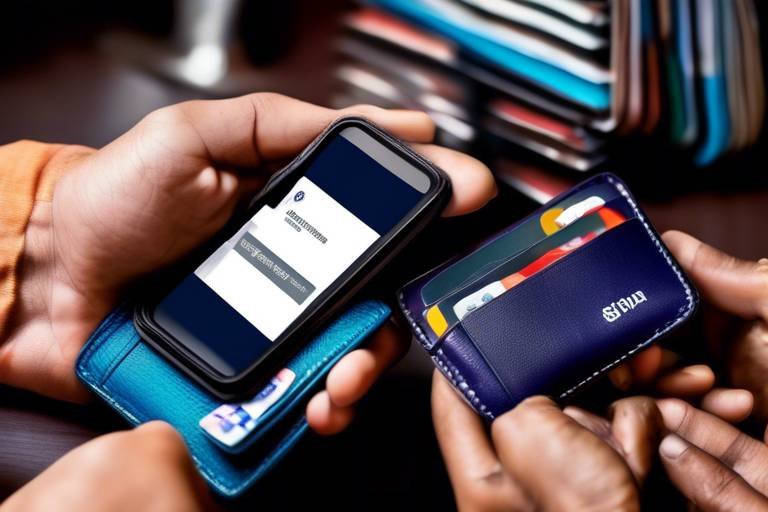The Importance of User-Centric Wallet Development
In today's fast-paced digital world, the way we handle our finances has dramatically transformed. Enter the digital wallet—an innovation that has not only simplified transactions but has also reshaped our relationship with money. However, the effectiveness of these wallets hinges on one critical factor: user-centric design. When we talk about user-centric wallet development, we're diving into a realm where usability, security, and accessibility are not just afterthoughts but the very foundation of the design process.
Imagine walking into a store where every item is out of reach or poorly labeled; it would be frustrating, right? This analogy perfectly encapsulates the experience many users face with poorly designed digital wallets. A wallet that prioritizes user needs ensures that every feature is intuitive, making it seamless for users to navigate through their financial transactions. It's not just about having a wallet that works; it's about having a wallet that feels right, that anticipates needs, and that enhances the overall user experience.
Moreover, the significance of user-centric design extends beyond mere functionality. It encompasses security, which is paramount in today's digital age. A wallet that is easy to use but lacks robust security features can lead to disastrous consequences for users. Therefore, integrating strong security measures while maintaining an intuitive interface is crucial. This balance is what separates a mediocre wallet from a truly exceptional one.
Accessibility is another vital component of user-centric wallet development. It's essential to create wallets that cater to a diverse range of users, including those with disabilities. Imagine a visually impaired person trying to use a wallet that doesn't have voice commands or haptic feedback. Such oversights can alienate a significant portion of potential users. Hence, designing for inclusivity is not just a moral obligation; it's a smart business strategy that opens doors to a wider audience.
In conclusion, the importance of user-centric wallet development cannot be overstated. By focusing on usability, security, and accessibility, developers can create wallets that not only meet but exceed user expectations. As we continue to innovate and evolve in the digital space, keeping the user's needs at the forefront will be the key to success in the wallet development landscape.
- What is a user-centric wallet?
A user-centric wallet is designed with the user's needs, preferences, and behaviors in mind, ensuring a seamless and intuitive experience. - Why is security important in wallet development?
Security is crucial to protect user data and financial transactions from unauthorized access and cyber threats. - How can wallets be made more accessible?
By incorporating features like voice commands, larger text options, and easy navigation for users with disabilities. - What are some future trends in wallet development?
Emerging trends include AI integration, enhanced personalization, and improved security protocols to meet evolving user expectations.

User Experience Design Principles
When it comes to digital wallets, user experience (UX) design principles are the backbone of creating an engaging and efficient platform. Imagine walking into a store where every item is perfectly organized, and the staff is always ready to help. That's the kind of seamless experience users expect from their digital wallets. To achieve this, developers must prioritize several key principles that make wallets both intuitive and user-friendly.
First and foremost, simplicity is essential. Users should be able to navigate the wallet effortlessly, without feeling overwhelmed by complex features or cluttered interfaces. A clean design not only enhances usability but also builds trust. Think of it this way: if a wallet looks complicated, users might hesitate to use it, fearing they might make a mistake. Therefore, it’s crucial to design interfaces that are straightforward and easy to understand.
Next, consistency plays a vital role in user experience. Users should find familiar elements throughout the wallet, such as icons, buttons, and navigation styles. This familiarity helps users feel comfortable and reduces the learning curve associated with using a new application. For example, if the 'send money' button is located in different places across various screens, users may become confused and frustrated. Consistency creates a sense of reliability, making it easier for users to engage with the wallet.
Another critical principle is feedback. Users need to know that their actions have been recognized and processed. Whether it’s a simple animation when they complete a transaction or a notification confirming a successful payment, feedback reassures users that everything is functioning correctly. This element of communication is crucial; it’s like a friendly nod from a cashier after you’ve made a purchase, letting you know all is well.
Moreover, accessibility cannot be overlooked. A digital wallet should cater to all users, including those with disabilities. This means incorporating features like voice commands, screen readers, and high-contrast modes. By embracing accessibility, developers not only comply with legal standards but also expand their user base. After all, a wallet that everyone can use is a wallet that everyone will want.
Finally, user testing is an indispensable part of the design process. Gathering real feedback from actual users allows developers to identify pain points and areas for improvement. It’s like having a focus group that provides insights into what works and what doesn’t. By conducting regular user testing sessions, developers can ensure their wallets evolve alongside user needs and preferences, leading to a more satisfying experience overall.
In summary, the principles of user experience design are critical for developing effective digital wallets. By focusing on simplicity, consistency, feedback, accessibility, and user testing, developers can create wallets that not only meet user expectations but also exceed them. The end goal is to foster an environment where users feel confident and satisfied while managing their financial transactions.
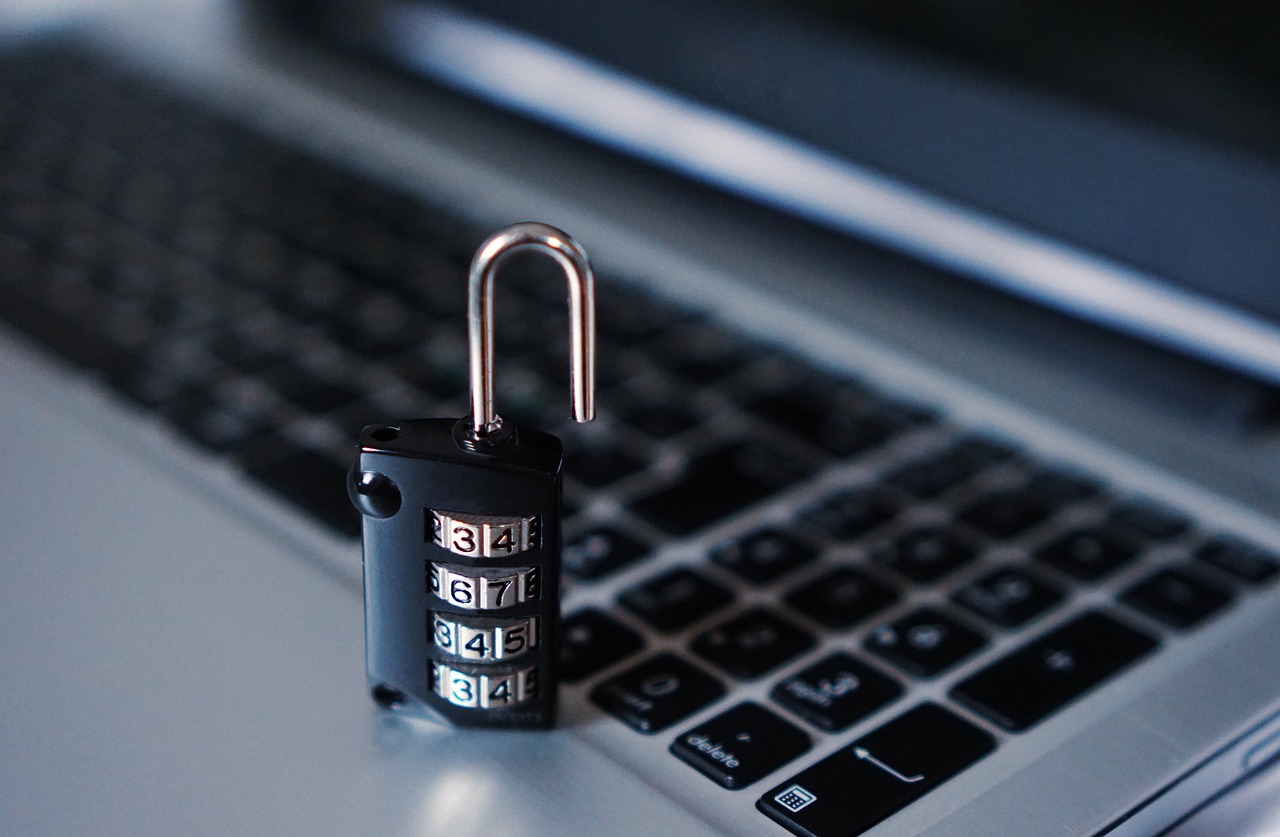
Security Features in Wallet Development
When it comes to digital wallets, security is not just an option; it's a necessity. With the rise of online transactions, sensitive user data is at risk, making it imperative for wallet developers to prioritize robust security features. Users need to feel confident that their financial information is safe from prying eyes and potential cyber threats. In this section, we will dive into the essential security features that every digital wallet should implement to protect user data and ensure secure transactions.
One of the most critical components of wallet security is encryption. This technology acts as a shield, scrambling user data so that even if it falls into the wrong hands, it remains unreadable. There are various encryption technologies that developers can choose from, each offering different levels of security. For instance, symmetric encryption uses the same key for both encryption and decryption, while asymmetric encryption employs a pair of keys—one public and one private. This distinction is crucial because it affects how easily data can be accessed and shared.
In the realm of wallet development, understanding the different types of encryption technologies is essential. For example, Advanced Encryption Standard (AES) is widely regarded for its strength and efficiency, making it a popular choice among developers. On the other hand, RSA encryption is commonly used for secure data transmission, especially in scenarios where data needs to be shared securely over the internet.
To give you a clearer picture, here's a brief comparison of the two main types of encryption methods:
| Encryption Method | Description | Use Cases |
|---|---|---|
| Symmetric Encryption | Uses a single key for both encryption and decryption. | Fast data encryption for local storage. |
| Asymmetric Encryption | Uses a pair of keys (public and private). | Secure data transmission over the internet. |
But encryption alone isn't enough. Wallet developers must also focus on implementing secure protocols. This means using SSL/TLS for secure communication, ensuring that data transmitted between the wallet and servers is encrypted. Additionally, developers should consider adopting OAuth for user authentication, which adds another layer of security by allowing users to grant limited access to their data without sharing their passwords.
Another essential feature is two-factor authentication (2FA). This security measure requires users to provide two forms of identification before accessing their accounts. Think of it as a double lock on your front door; even if someone has the key (your password), they still need a second key (a code sent to their phone) to get in. This significantly reduces the risk of unauthorized access, making it a must-have for any digital wallet.
In conclusion, the importance of security features in wallet development cannot be overstated. By integrating advanced encryption technologies, secure protocols, and two-factor authentication, developers can create a digital wallet that not only meets user needs but also provides a safe environment for transactions. As users become more aware of security threats, wallets that prioritize these features will stand out in a crowded market, ultimately leading to higher user satisfaction and trust.
Here are some common questions related to security features in wallet development:
- What is the most important security feature for a digital wallet? - While all features are important, encryption is often considered the cornerstone of wallet security.
- How does two-factor authentication enhance security? - It adds an additional layer of protection, requiring users to verify their identity through multiple means.
- Can I use a digital wallet without two-factor authentication? - Yes, but it's highly discouraged as it significantly increases the risk of unauthorized access.

Encryption Technologies
In the world of digital wallets, stand as the sentinels guarding sensitive information. When you think about it, using a digital wallet is akin to carrying a vault in your pocket. Just as you wouldn’t leave your vault unguarded, your wallet must employ robust encryption methods to protect your personal data from prying eyes. Encryption acts as a shield, scrambling your information so that, even if a malicious actor intercepts it, they can’t make sense of it. This is crucial, especially when you consider the increasing number of cyber threats lurking in the digital landscape.
There are several types of encryption technologies, each with its own strengths and applications. For instance, Advanced Encryption Standard (AES) is widely recognized for its effectiveness and is often employed in various wallet applications. AES uses symmetric encryption, meaning the same key is used for both encrypting and decrypting data. This method is like having a key that locks and unlocks your vault, making it fast and efficient.
On the other hand, asymmetric encryption uses a pair of keys: a public key, which anyone can access, and a private key, which is kept secret. This method is often used for secure communications and transactions, ensuring that even if someone intercepts the public key, they cannot decrypt the information without the private key. Think of it as sending a locked box to someone; only they have the key to open it.
To illustrate the differences between these encryption methods, here’s a simple comparison:
| Encryption Type | Key Usage | Speed | Use Cases |
|---|---|---|---|
| AES (Symmetric) | Single Key | Fast | Data at rest, secure storage |
| Asymmetric | Public & Private Key | Slower | Secure transactions, key exchange |
Implementing these encryption technologies is vital not just for protecting user data, but also for building trust. Users need to feel confident that their financial information is secure. Just like you wouldn’t trust a bank without a solid security system, users won’t adopt digital wallets that lack strong encryption. The more secure the wallet, the more likely users are to engage with it, leading to a better overall experience.
In conclusion, the importance of in wallet development cannot be overstated. They are the backbone of security in digital transactions, ensuring that users can enjoy the convenience of digital wallets without compromising their personal information. As we move forward, the evolution of these technologies will continue to shape the landscape of digital finance, making it imperative for wallet developers to stay ahead of the curve.

Types of Encryption Methods
When it comes to securing digital wallets, understanding the available is crucial. Encryption serves as the backbone of security, ensuring that sensitive data remains protected from prying eyes. There are two primary categories of encryption: symmetric encryption and asymmetric encryption. Each method has its unique characteristics, advantages, and use cases, making them suitable for different scenarios in wallet development.
Symmetric encryption is the simpler of the two methods. It uses a single key for both encryption and decryption, meaning that the same key must be shared between the sender and the recipient. This method is fast and efficient, making it ideal for encrypting large amounts of data. However, the challenge lies in securely sharing the key. If the key is intercepted, unauthorized users can gain access to the encrypted data. Common algorithms used in symmetric encryption include AES (Advanced Encryption Standard) and DES (Data Encryption Standard).
On the other hand, asymmetric encryption employs a pair of keys: a public key and a private key. The public key can be shared openly, while the private key must remain confidential. This method allows users to encrypt data with the recipient's public key, ensuring that only the recipient can decrypt it with their private key. Asymmetric encryption is generally slower than symmetric encryption but provides a higher level of security, especially for key exchange processes. Popular algorithms include RSA (Rivest-Shamir-Adleman) and ECC (Elliptic Curve Cryptography).
To illustrate the differences between these encryption methods, consider the following table:
| Type of Encryption | Key Usage | Speed | Security Level | Common Algorithms |
|---|---|---|---|---|
| Symmetric | Single Key | Fast | Moderate | AES, DES |
| Asymmetric | Public & Private Keys | Slower | High | RSA, ECC |
Choosing the right encryption method depends on the specific requirements of the digital wallet application. While symmetric encryption might be preferred for speed when handling large transactions, asymmetric encryption is often favored for secure key exchanges and ensuring that sensitive information remains private. In practice, many wallet developers implement a combination of both methods to leverage the strengths of each.
Ultimately, understanding these encryption methods is vital for developers aiming to create secure digital wallets. By selecting the appropriate encryption strategy, they can protect user data effectively, maintaining trust and confidence in their digital financial systems.
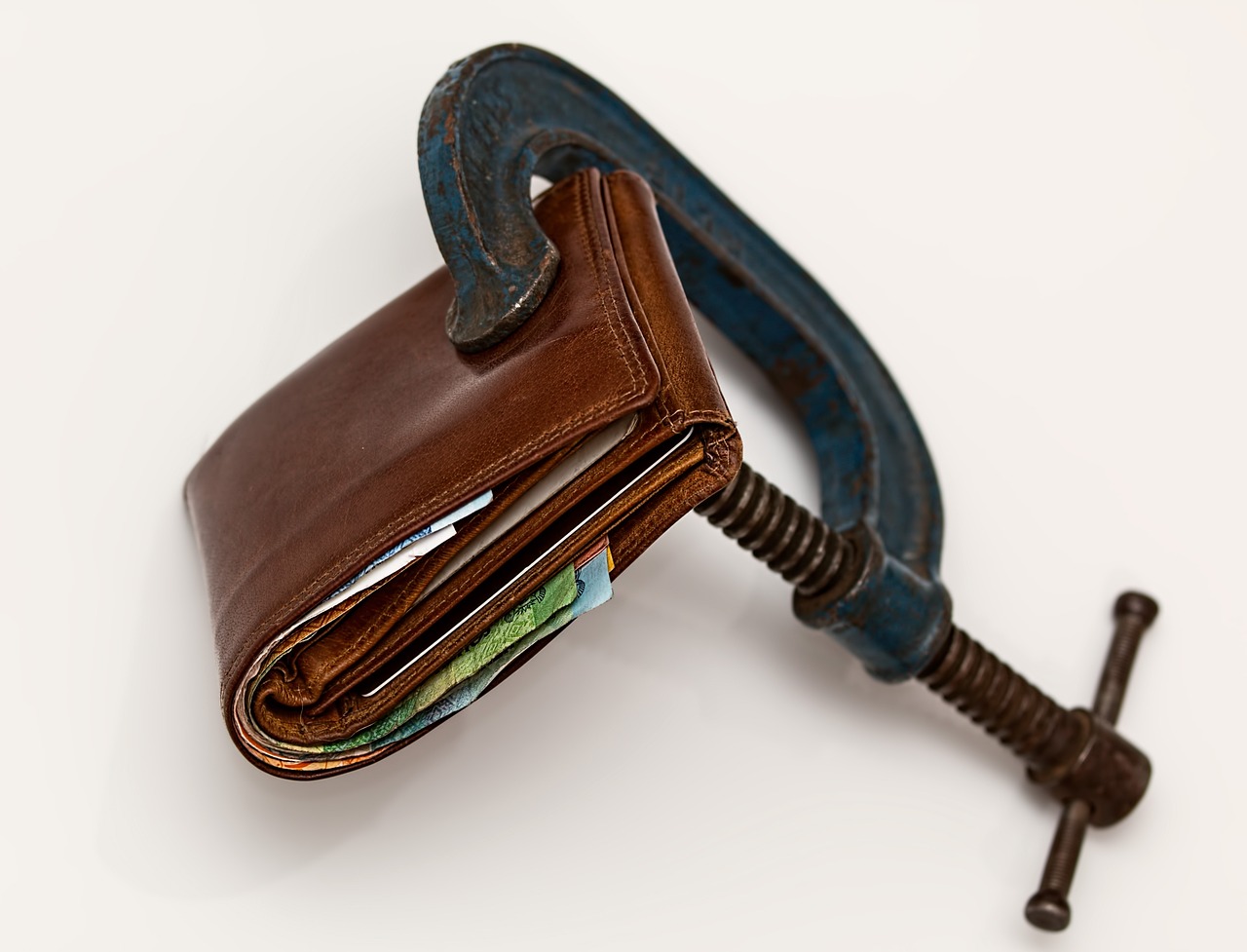
Implementing Secure Protocols
When it comes to developing digital wallets, is not just an option; it's a necessity. Think of secure protocols as the fortified walls of a castle, keeping your treasures—your personal data and financial information—safe from intruders. Without these protective measures, your wallet could easily become a target for cybercriminals looking to exploit vulnerabilities. So, what exactly are these protocols, and how do they work?
At the heart of secure wallet development lies the use of various communication protocols that ensure data is transmitted safely between the user and the wallet service. One of the most widely used protocols is HTTPS, which encrypts the data exchanged over the internet, making it difficult for hackers to eavesdrop on transactions. This is akin to sending a sealed letter instead of a postcard—only the intended recipient can read the contents.
Another vital aspect is the integration of TLS (Transport Layer Security). TLS not only encrypts the data but also authenticates the parties involved in the transaction. Imagine it as a secret handshake that confirms you are dealing with the right person. This dual layer of security helps prevent man-in-the-middle attacks, where an unauthorized entity tries to intercept and manipulate the communication between the user and the wallet service.
Moreover, it’s essential to regularly update these security protocols to adapt to evolving threats. Cybersecurity is a constantly changing landscape, and what was secure yesterday might not hold up today. Therefore, implementing a robust update mechanism is crucial. This can include automatic updates for the wallet software to ensure that users are always protected with the latest security features.
In addition to these measures, utilizing API security is another critical layer. APIs (Application Programming Interfaces) allow different software applications to communicate with each other. By securing APIs, we can ensure that only authorized applications can access sensitive data. This is similar to having a bouncer at a club who checks IDs before letting anyone in; it keeps unwanted guests out while allowing legitimate users to enjoy the services.
In summary, implementing secure protocols in digital wallet development is a multi-faceted approach that requires attention to detail and a proactive mindset. By focusing on encryption, authentication, regular updates, and API security, developers can create wallets that not only meet user expectations but also stand resilient against potential threats. After all, a wallet is only as good as the security measures that protect it.

Two-Factor Authentication
In today's digital landscape, where cyber threats loom large, Two-Factor Authentication (2FA) has emerged as a crucial safeguard for digital wallets. But what exactly is 2FA, and why should you care? Imagine locking your front door but also installing a high-tech security system that requires a second key. That's essentially what 2FA does for your online accounts. It adds an extra layer of security by requiring not only a password but also a second form of verification. This could be a text message code, an email link, or even a biometric scan, depending on the wallet's design.
When you enable 2FA on your wallet, you significantly reduce the risk of unauthorized access. Think about it: even if a hacker manages to steal your password, they would still need that second factor to break into your account. This dual-layer security system is not just a recommendation; it's becoming a necessity as users store more sensitive information in their digital wallets, from payment details to personal identification documents.
Moreover, the implementation of 2FA can vary across different wallets. Here are some common methods used:
- SMS Codes: A code is sent to your registered mobile number, which you must enter to access your account.
- Email Verification: A link or code is sent to your email address for you to confirm your identity.
- Authenticator Apps: Apps like Google Authenticator generate time-sensitive codes that you enter during the login process.
- Biometric Authentication: This includes fingerprint scans or facial recognition, providing a seamless yet secure way to access your wallet.
While 2FA is a robust security feature, it’s important to understand that no system is foolproof. Users must remain vigilant. For instance, ensure that your recovery options are secure and that you're using strong, unique passwords. Additionally, always be cautious of phishing attempts that could compromise your second factor of authentication. Remember, the goal of 2FA is to make unauthorized access as difficult as possible, and when combined with good security practices, it significantly enhances the safety of your digital wallet.
In conclusion, implementing is a proactive step every wallet user should take. It not only protects your financial information but also gives you peace of mind in an increasingly digital world. As technology continues to evolve, staying ahead of potential threats with robust security measures like 2FA will be essential in ensuring the safety and integrity of your digital assets.
Q1: What is Two-Factor Authentication?
A1: Two-Factor Authentication (2FA) is a security process that requires two different forms of identification before granting access to an account, enhancing the overall security of online transactions.
Q2: How does 2FA work?
A2: After entering your password, you will be required to provide a second piece of information, such as a code sent to your phone or an app, to verify your identity.
Q3: Is 2FA necessary for digital wallets?
A3: Yes, 2FA is highly recommended for digital wallets as it significantly reduces the risk of unauthorized access and protects sensitive financial information.
Q4: Can I disable 2FA?
A4: While you can typically disable 2FA in your wallet settings, it's not advisable as it lowers your account security.
Q5: What should I do if I lose access to my 2FA method?
A5: Most wallets provide recovery options, such as backup codes or recovery questions, to regain access. Always keep these secure and accessible.
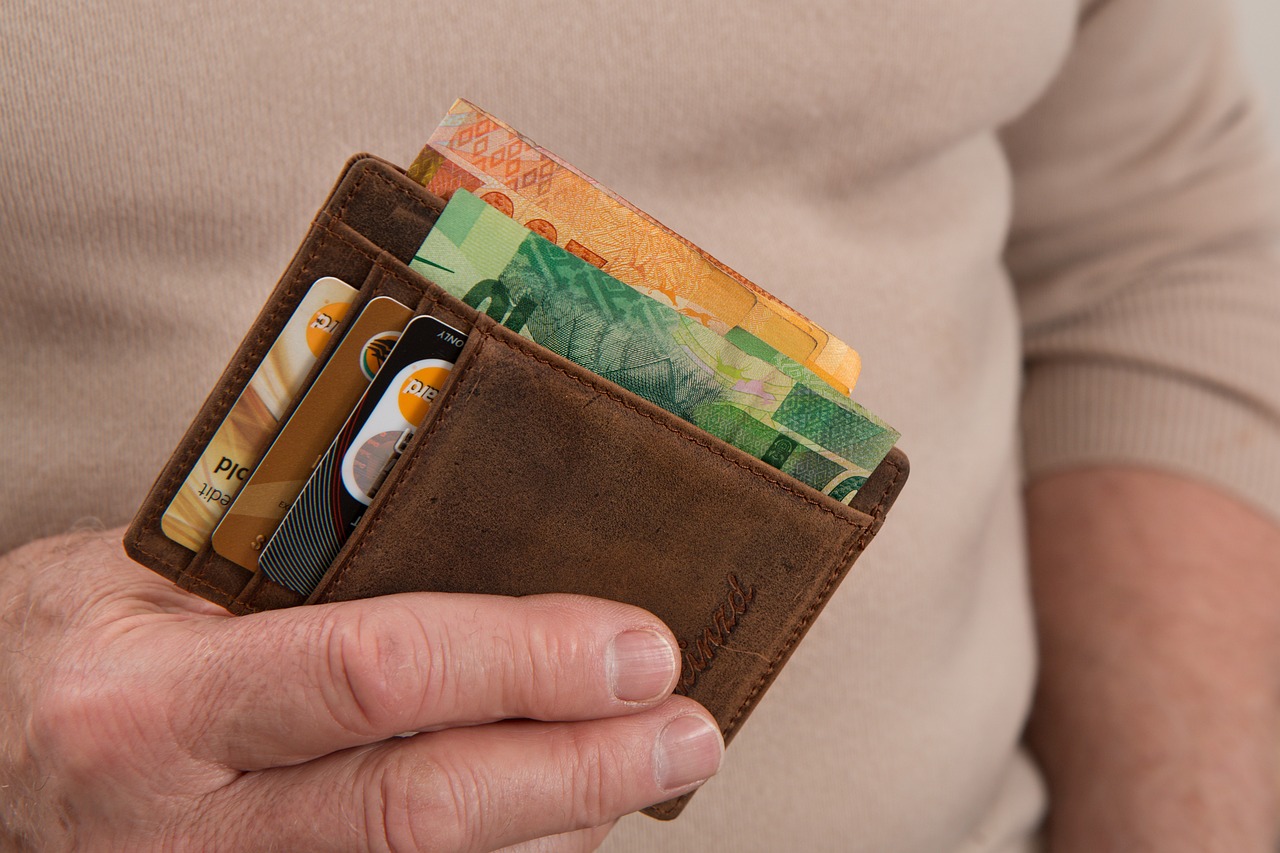
Accessibility and Inclusivity
In today's digital landscape, accessibility and inclusivity are not just buzzwords; they are essential elements in the design of digital wallets. Imagine trying to use a wallet that isn't designed with your needs in mind—frustrating, right? That's why creating wallets that cater to a diverse range of users is crucial. This means ensuring that everyone, including those with disabilities, can navigate and utilize digital wallets effectively. It's not just about making things pretty; it's about making them functional for all.
To achieve true inclusivity, developers must consider various factors that impact user experience. For instance, think about how someone with visual impairments might interact with a wallet application. They may rely on screen readers or other assistive technologies. Therefore, incorporating features like high-contrast visuals, text-to-speech options, and keyboard navigation can significantly enhance usability. The goal is to create a seamless experience that doesn't exclude anyone based on their abilities.
Furthermore, addressing the needs of diverse user groups can also involve understanding cultural differences and varying levels of technological literacy. For example, some users might be more familiar with mobile payments, while others may still prefer traditional methods. By providing multiple payment options and clear instructions, developers can ensure that everyone feels comfortable using the wallet.
In addition to these design considerations, user testing plays a vital role in achieving accessibility. Gathering feedback from individuals with different abilities can provide invaluable insights into how the wallet can be improved. For instance, conducting usability tests with participants who have disabilities can reveal specific challenges they face. This feedback loop is essential for refining the wallet's features and ensuring that it meets the needs of all users.
To summarize, a commitment to accessibility and inclusivity in wallet development is not just a legal obligation but a moral one. By embracing these principles, developers can create digital wallets that are welcoming to everyone, regardless of their abilities or backgrounds. This not only enhances user satisfaction but also opens up financial services to a broader audience, ultimately driving innovation and growth in the digital payment space.
As we move forward, it’s clear that the future of wallet development will hinge on our ability to create solutions that are not only functional but also accessible. After all, in a world where technology continues to evolve, making sure that no one is left behind should be our top priority.
- What is accessibility in digital wallet development?
Accessibility refers to the design of products, devices, services, or environments for people with disabilities. In digital wallets, it means ensuring that all users, including those with disabilities, can easily navigate and use the wallet's features. - Why is inclusivity important in wallet design?
Inclusivity ensures that everyone, regardless of their background or abilities, has equal access to financial services. This broadens the user base and enhances user satisfaction. - How can user testing improve accessibility?
User testing with diverse groups can highlight specific challenges faced by users with disabilities, allowing developers to make necessary adjustments to improve usability.

Designing for Diverse User Groups
When it comes to designing digital wallets, one of the most crucial aspects is understanding the diverse user groups that will interact with the application. Just think about it: every user has unique needs, preferences, and challenges. Ignoring these differences can lead to a frustrating experience, and ultimately, users may abandon the wallet altogether. So, how do we ensure that our digital wallets are not only functional but also inclusive and accessible?
First and foremost, it’s essential to conduct thorough research on the various demographics that will use the wallet. This includes but is not limited to age, gender, socioeconomic status, and even technological proficiency. For instance, a tech-savvy millennial may prefer a sleek, feature-rich interface, while an elderly user might appreciate a more straightforward design with larger buttons and clear instructions. By understanding these distinctions, developers can create a tailored experience that resonates with each user group.
Moreover, incorporating accessibility features is not just a checkbox on a list; it’s a commitment to making financial services available to everyone. For users with disabilities, features like screen readers, voice commands, and high-contrast visuals can make a world of difference. Imagine navigating a wallet app with ease, thanks to thoughtful design choices that consider various physical and cognitive abilities. This not only enhances user satisfaction but also broadens the user base, allowing more individuals to benefit from digital financial services.
To further illustrate this point, let’s take a closer look at some key considerations when designing for diverse user groups:
- User Interface (UI): Ensure that the UI is adaptable, allowing users to customize their experience according to their preferences.
- Language and Localization: Offer multiple language options and consider cultural nuances in design and functionality.
- Feedback Mechanisms: Implement features that allow users to provide feedback easily, ensuring their voices are heard and considered in future updates.
Additionally, ongoing user testing is vital. Engaging with a diverse group of users during the development process can provide invaluable insights. It’s not just about building a product; it’s about creating a community where users feel valued and included. By actively seeking feedback and making necessary adjustments, developers can enhance the wallet's functionality and ensure it meets the needs of all users.
In conclusion, designing for diverse user groups is not merely a trend; it’s a necessity in today’s digital landscape. By prioritizing inclusivity and accessibility, digital wallet developers can create a more equitable financial ecosystem that empowers everyone, regardless of their background or abilities. So, let’s embrace diversity in design and pave the way for a future where digital wallets are truly for everyone.
- What are the key principles of designing for diverse user groups?
Key principles include understanding user demographics, incorporating accessibility features, and actively seeking user feedback to ensure the wallet meets varied needs.
- Why is accessibility important in digital wallet design?
Accessibility ensures that all users, including those with disabilities, can effectively use the wallet, promoting inclusivity and broadening the user base.
- How can user feedback improve wallet functionality?
User feedback provides insights into real-world usage, allowing developers to make informed adjustments and enhancements that improve overall user satisfaction.

User Testing and Feedback
User testing and feedback are not just optional steps in the wallet development process; they are essential components that can make or break the overall user experience. Imagine crafting a beautiful, feature-rich wallet that looks great on paper, but when users get their hands on it, they struggle to navigate or perform basic functions. Frustrating, right? That's why integrating user testing from the very beginning can save developers from costly redesigns and unsatisfied users later on.
When it comes to user testing, the goal is to observe real users interacting with the wallet in a controlled environment. This allows developers to identify pain points—those little hiccups that can lead to a poor experience. By gathering feedback during these sessions, teams can pinpoint specific areas that need improvement. For instance, if users consistently struggle to find the transaction history, it might indicate that the navigation is not intuitive enough. Addressing these issues before the wallet goes live is crucial for ensuring user satisfaction.
Moreover, feedback doesn’t stop after the initial launch. Continuous user feedback is vital for ongoing development. By creating channels for users to share their thoughts, whether through surveys, in-app feedback forms, or community forums, developers can keep their fingers on the pulse of user needs. This approach not only enhances the wallet’s functionality but also fosters a sense of community among users, as they feel their opinions are valued and acted upon.
To illustrate the impact of user testing and feedback, consider the following table that outlines the key stages in the user testing process:
| Stage | Description |
|---|---|
| Planning | Define objectives, select user groups, and determine testing methods. |
| Recruitment | Find and invite users that represent your target audience. |
| Testing | Observe users as they interact with the wallet, taking notes on their behavior. |
| Analysis | Evaluate the collected data to identify trends and areas for improvement. |
| Implementation | Make necessary changes based on user feedback and retest as needed. |
In conclusion, user testing and feedback are not just boxes to check off; they are the lifeblood of wallet development. By actively engaging with users, developers can create a more intuitive, secure, and accessible wallet that meets the diverse needs of its users. After all, a wallet is only as good as the experience it offers, so why not make it the best it can be?
- Why is user testing important in wallet development? User testing helps identify usability issues and gather feedback, ensuring the wallet meets user needs effectively.
- How can I gather user feedback after launch? You can use surveys, in-app feedback forms, and community forums to collect user insights continuously.
- What are some common issues found during user testing? Common issues include navigation difficulties, unclear instructions, and problems with transaction processes.
- How often should I conduct user testing? It's best to conduct user testing at various stages of development and periodically after launch to ensure ongoing improvement.

Future Trends in Wallet Development
As we step into an era where technology is advancing at lightning speed, the landscape of digital wallets is evolving to meet the ever-changing expectations of users. The future of wallet development is not just about keeping up with the trends; it's about anticipating user needs and integrating innovative features that enhance the overall experience. One of the most exciting trends is the integration of artificial intelligence (AI), which is set to revolutionize how users interact with their wallets. AI can analyze user behavior, predict spending patterns, and even offer personalized financial advice, making wallets not just transactional tools but also financial advisors.
Moreover, enhanced user personalization is becoming a focal point in wallet development. Imagine a wallet that tailors its interface based on your preferences or suggests promotions and offers based on your spending habits. This level of customization not only improves user satisfaction but also fosters a deeper connection between the user and the wallet. Additionally, the use of biometric authentication is on the rise, offering a seamless and secure way to access digital wallets. Fingerprint scanning and facial recognition are not just trendy; they provide a level of security that passwords simply can't match.
Another trend that cannot be overlooked is the push for decentralized finance (DeFi) integration. As more users become aware of blockchain technology and its benefits, wallets that support DeFi features, such as lending, borrowing, and staking, will likely see increased adoption. This shift not only empowers users but also democratizes access to financial services, making it easier for everyone to participate in the financial ecosystem.
In addition to these advancements, the importance of cross-platform compatibility is becoming more pronounced. Users want to access their wallets from multiple devices without any hiccups. Therefore, developers are focusing on creating wallets that seamlessly integrate across smartphones, tablets, and desktops. This ensures that users can manage their finances anytime, anywhere, without feeling restricted.
Lastly, the demand for sustainability in technology is influencing wallet development as well. As users become more environmentally conscious, wallets that promote eco-friendly practices, such as carbon offsetting for transactions or partnerships with sustainable brands, are likely to gain traction. This trend aligns with a broader societal shift towards sustainability, making it a win-win for both users and developers.
In summary, the future of wallet development is bright and filled with opportunities. By embracing AI, enhancing personalization, integrating DeFi features, ensuring cross-platform compatibility, and promoting sustainability, developers can create wallets that not only meet but exceed user expectations. As we look ahead, it's clear that the key to success lies in understanding and adapting to the needs of the user, paving the way for a more innovative and user-centric financial landscape.
- What is the role of AI in digital wallets? AI helps in analyzing user behavior, predicting spending patterns, and providing personalized financial advice.
- How does biometric authentication enhance security? Biometric authentication, such as fingerprint scanning and facial recognition, offers a secure and convenient way to access digital wallets.
- What are DeFi features in digital wallets? DeFi features allow users to lend, borrow, and stake cryptocurrencies directly from their wallets, promoting financial inclusivity.
- Why is cross-platform compatibility important? It allows users to access their wallets seamlessly across different devices, enhancing convenience and usability.
- How can digital wallets promote sustainability? By partnering with eco-friendly brands and promoting carbon offsetting, digital wallets can contribute to environmentally conscious practices.
Frequently Asked Questions
- What is user-centric wallet development?
User-centric wallet development focuses on creating digital wallets that prioritize the needs and preferences of users. This approach enhances usability, security, and accessibility, ensuring that users have a seamless experience when managing their finances.
- Why is user experience design important in wallet development?
User experience design is crucial because it determines how easily users can navigate and perform transactions within the wallet. A well-designed interface can significantly reduce frustration and improve overall satisfaction, making it essential for retaining users.
- What security features should I look for in a digital wallet?
When choosing a digital wallet, look for features such as encryption, two-factor authentication, and secure protocols. These elements help protect your personal data and transactions from potential threats, ensuring your financial information remains safe.
- How does encryption work in wallet development?
Encryption is a method of converting data into a code to prevent unauthorized access. In wallet development, various encryption technologies are employed to secure sensitive information, making it extremely difficult for hackers to decrypt and misuse your data.
- What are the different types of encryption methods used in wallets?
There are primarily two types of encryption methods: symmetric and asymmetric encryption. Symmetric encryption uses the same key for both encryption and decryption, while asymmetric encryption uses a pair of keys. Each method offers unique advantages and is suited for different use cases in wallet applications.
- How does two-factor authentication enhance wallet security?
Two-factor authentication adds an extra layer of security by requiring users to provide two forms of identification before accessing their accounts. This significantly reduces the risk of unauthorized access, as even if someone obtains your password, they would still need the second factor to log in.
- What accessibility features should digital wallets have?
Digital wallets should include features like screen reader compatibility, voice commands, and customizable text sizes to cater to users with disabilities. Ensuring that all users can effectively access and use digital wallets promotes inclusivity in financial services.
- Why is user testing important in wallet development?
User testing is essential because it provides valuable insights into how real users interact with the wallet. Gathering feedback helps developers identify pain points and areas for improvement, leading to a more user-friendly product and higher satisfaction rates.
- What future trends should we expect in wallet development?
As technology advances, we can expect trends such as AI integration for personalized user experiences and enhanced security features. These innovations aim to meet evolving user expectations and improve the overall functionality of digital wallets.



